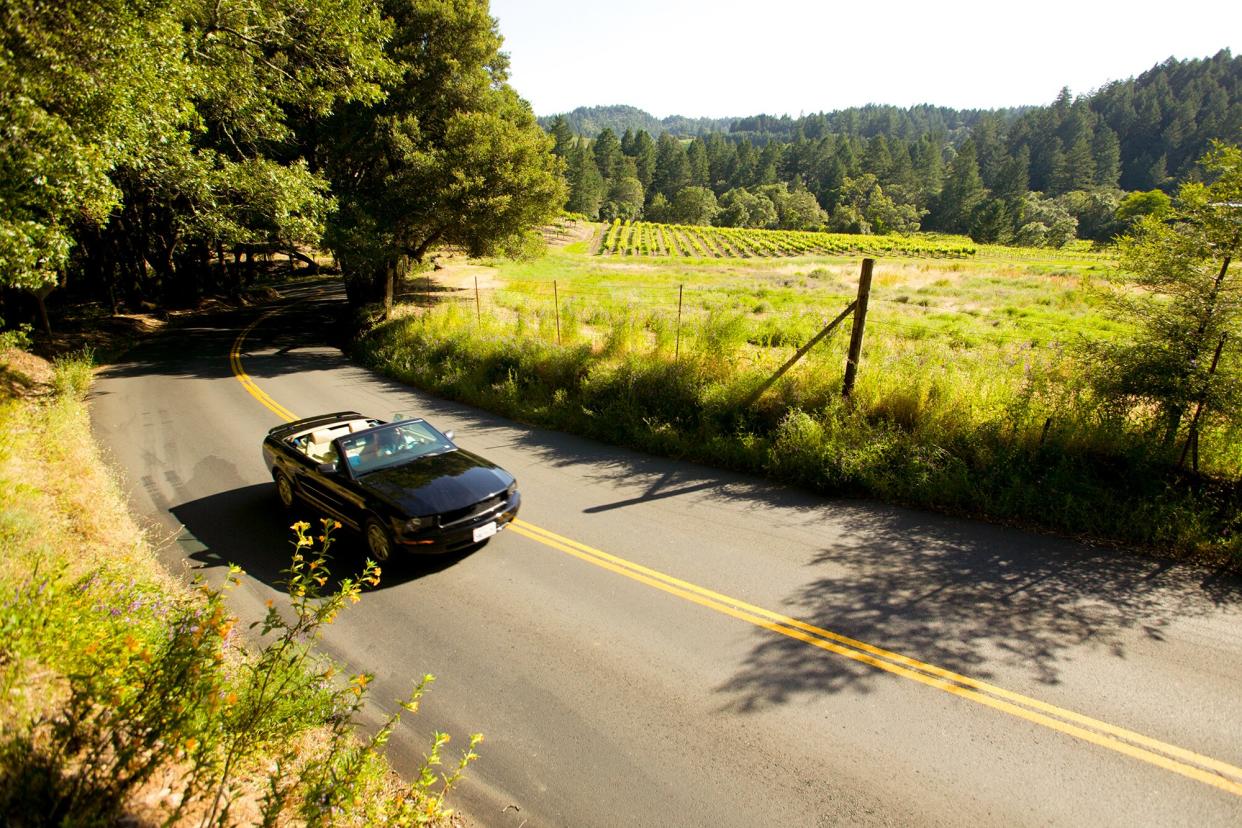A Road Trip Through California's Top Wine Regions

Martin Sundberg / Getty Images
Napa and Sonoma may get most of the attention, but California is about so much more than its most famous regions. Just look at the map: It stretches from Oregon in the north to Mexico in the south, and includes a massive Pacific coastline, mountains, deserts, and more all within its borders. It's no wonder that the state is home to a wildly diverse range of wines and wine styles. Which is exactly what renowned sommelier, media personality, and content creator Amanda McCrossin highlighted in her second session at the 2022 Food & Wine Classic in Aspen, "California Dreaming: A Roadtrip Through California's Top Wine Regions."
Guests of her presentation had the opportunity to explore much of what the state has to offer through a selection of eight wines that she chose for their unique ability to showcase just what makes California so exciting.
"California is incredibly diverse and still relatively young as far as the wine world is concerned," McCrossin explained. "Just as many regions in France outside of Bordeaux and Burgundy are beloved for their distinctive terroir and wines, the same could and should be said for that of California. What's particularly interesting is how quickly the climate and terroir can change within even an hour's drive. It's what makes this place truly unlike any other."
Hop in your car in Napa Valley's Oakville and head west to Fort Ross-Seaview on this hypothetical road trip, and in less than two hours you'll be in a place that looks completely different, with a climate and terroir that tee up world-class Pinot Noir as opposed to Cabernet Sauvignon. Head southeast for five hours and you'll hit Paso Robles, whose Rhône-style wines have wowed critics and sommeliers for years. McCrossin predicts that it's ready to break through in a big way among consumers, too.
"Right now I think Paso Robles is just absolutely poised to explode, and I think consumers should really start familiarizing and getting to know the region more intimately," she recommended. "The wines are incredible, and visiting there now twice this year, I've been blown away by the hospitality! Santa Barbara is making some of my favorite wines in the state. It's insane to me that you can have ethereal, mouthwatering Pinot Noirs from one part of the region and just a few miles away, these powerhouse Rhône reds. And both are fantastic!"
That's the magic of California's wine industry — its ability to shine in thoroughly unique ways from one region to another. The wines she featured in Aspen embodied that well: The Benovia Three Sisters Chardonnay from Fort Ross-Seaview was a fascinating counterpoint to the Dragonette Duvarita Chardonnay from Santa Barbara; the DuMOL Highland Divide Pinot Noir from Russian River Valley showed a different side of the variety from the Maggy Hawk Stormin' Pinot from Anderson Valley.
And the 'biggest surprise' for guests, as McCrossin noted in an email, was the Moraga Red Wine from Bel Air. "Yes, that Bel Air. The Fresh Prince would definitely be all about this wine, and it's amazing to me how many people have never heard of it. Tony Soter famously made the wines for a period as the grapes were sent up to Napa to be made at Etude. These are estate grown Bordeaux blends that can hang with the best of them. They even have a winery on site now right in the Santa Monica Mountains…I think guests' minds are going to be blown when they taste this — it's absolutely exquisite."
So, too, were more familiar bottlings from Napa Valley, like the Duhig Cabernet Sauvignon, and from Sonoma Valley as embodied by the Hamel Family Isthmus. Both of them showed that even the most famous regions still have the ability to push into the future even as they respect their storied pasts.
"My heart will always be with Napa, especially as it pertains to the oldies," McCrossin explained. "Working as a sommelier at Press gave me a very unique perspective on the region and all that it has to offer in terms of age-ability and quality. Sure the prices have skyrocketed, but so has the quality. The wines are better than they ever have been. What's interesting," she continued, "is that there's an acknowledgement of the past that seems to be informing the future. What I mean is, we've had some really distinctive eras of Napa Valley's winemaking history since the 1950s. We've figured out what works and what doesn't. And now it feels like winemakers are implementing all the information we've gathered over the last six or so decades to make wines that are very much of the region. And they're not stopping. Every year they push harder to improve and raise the bar."

